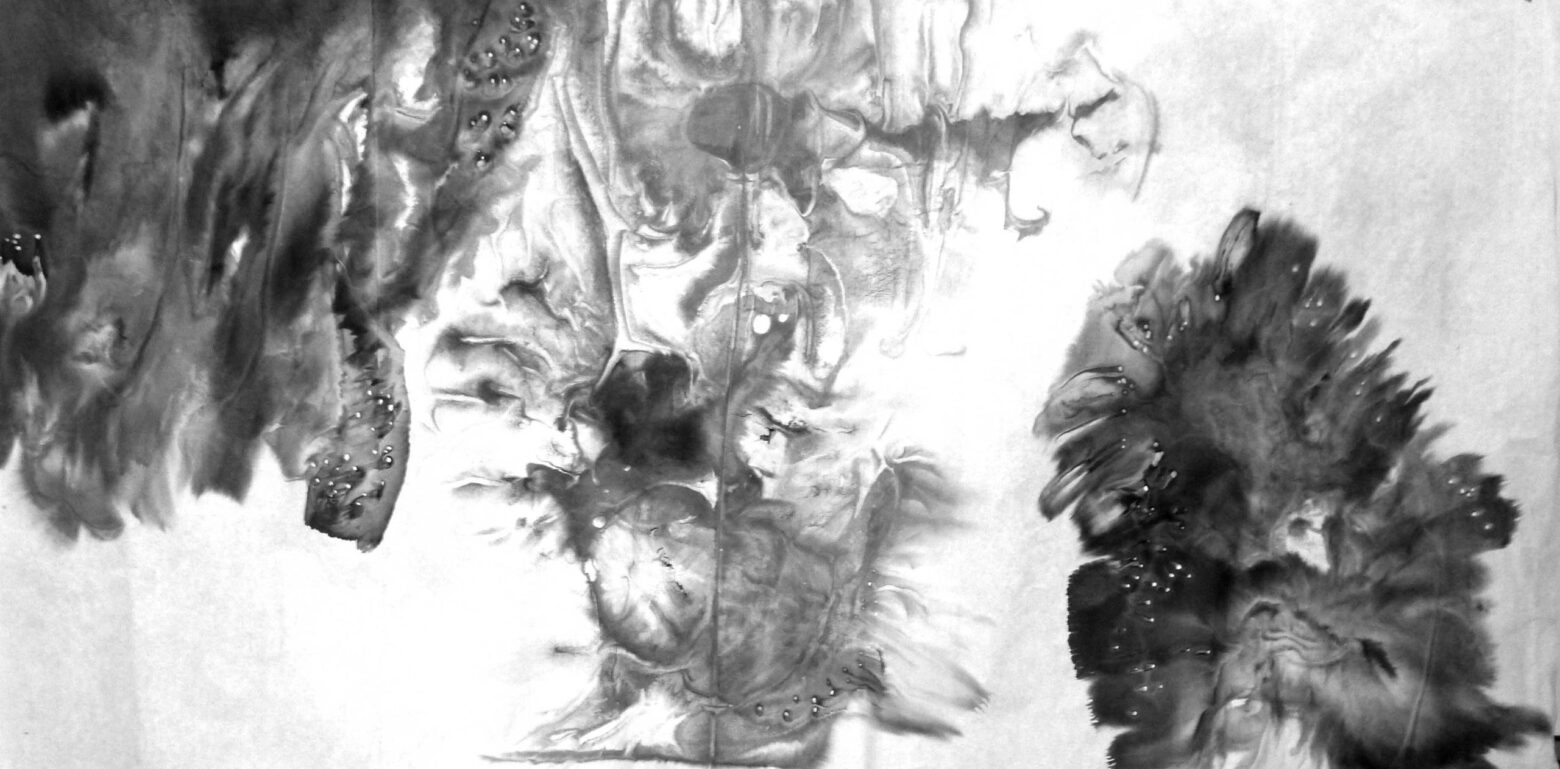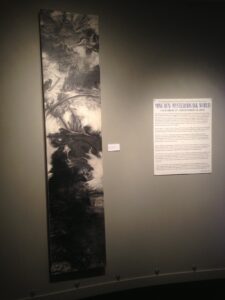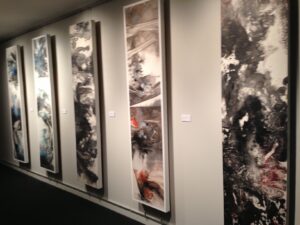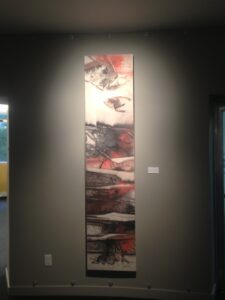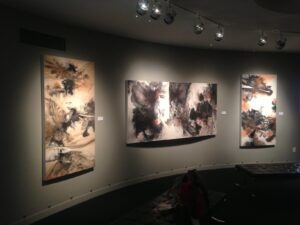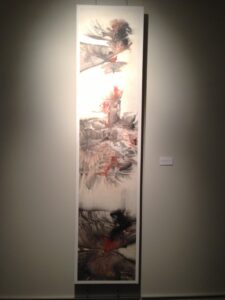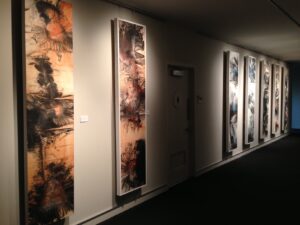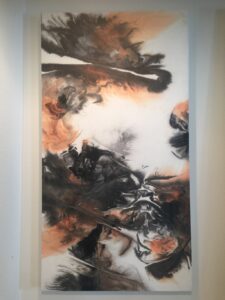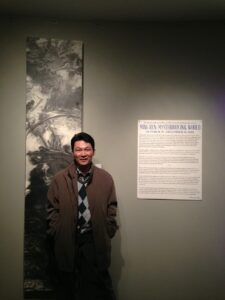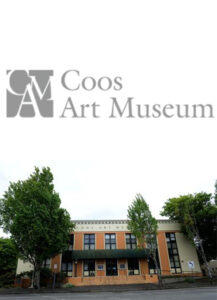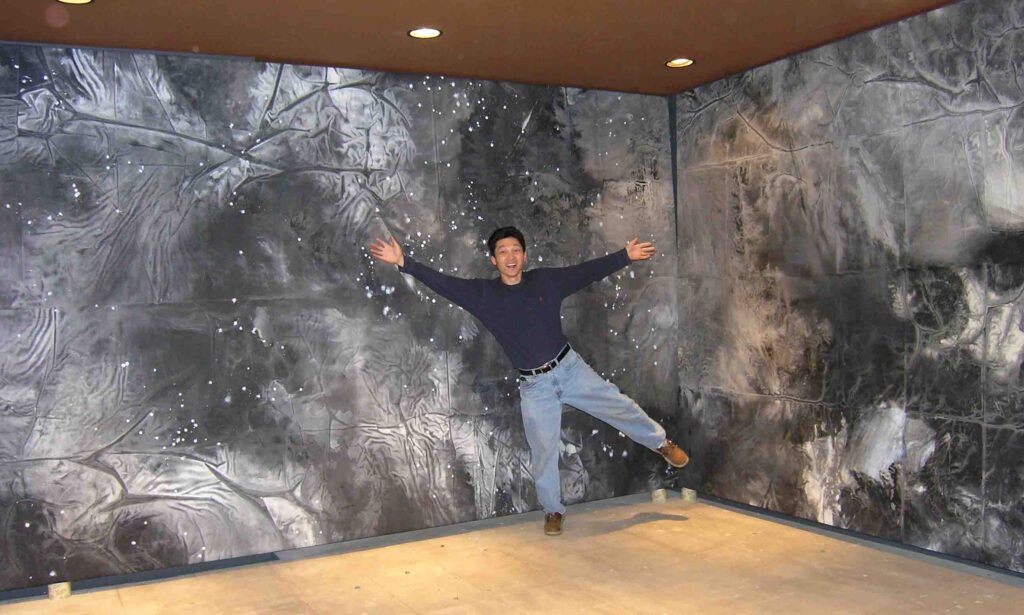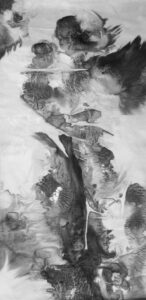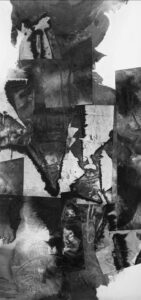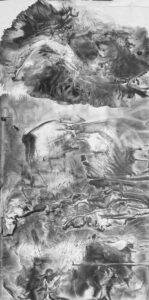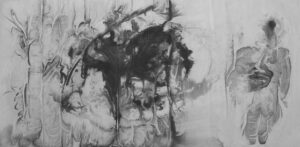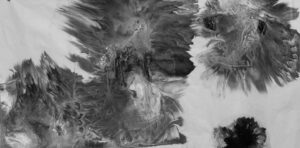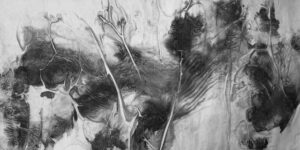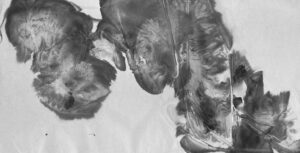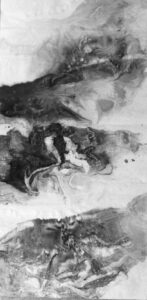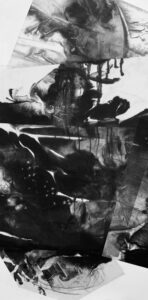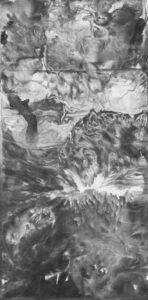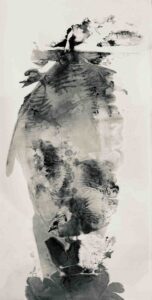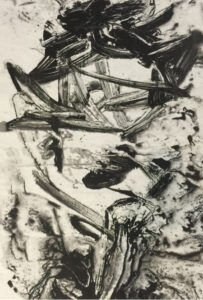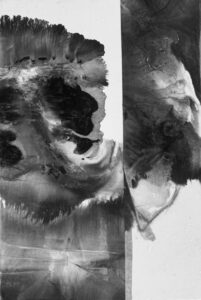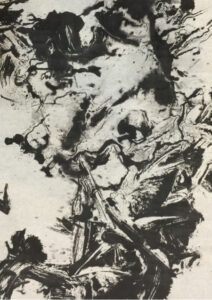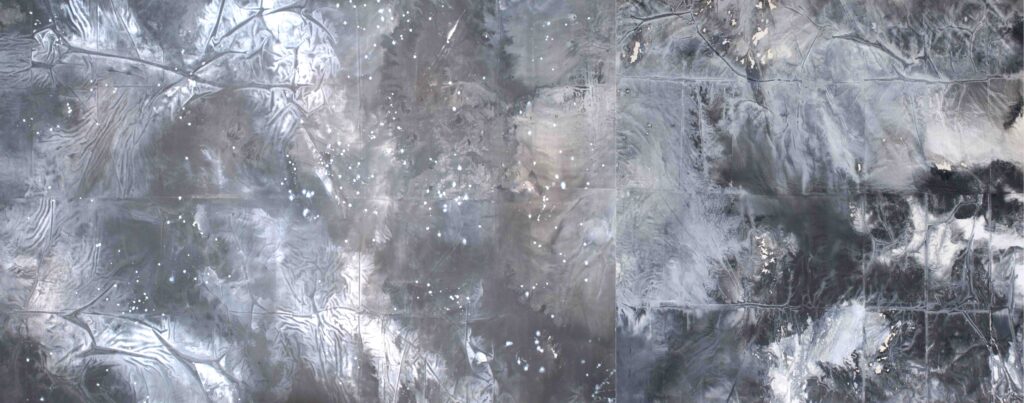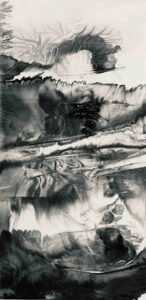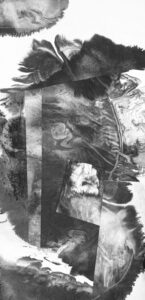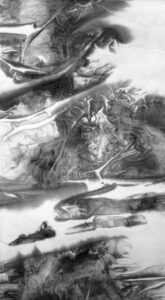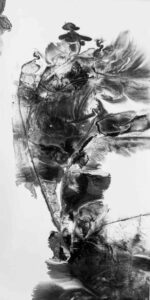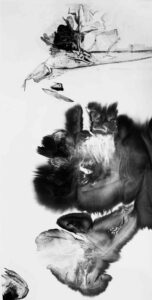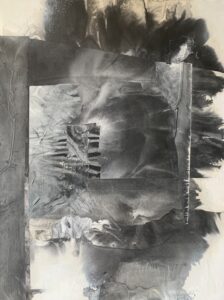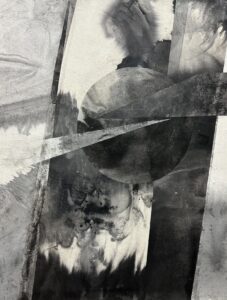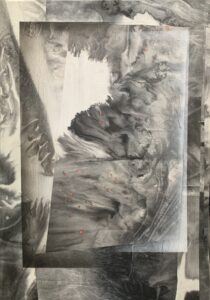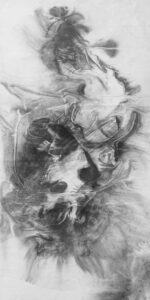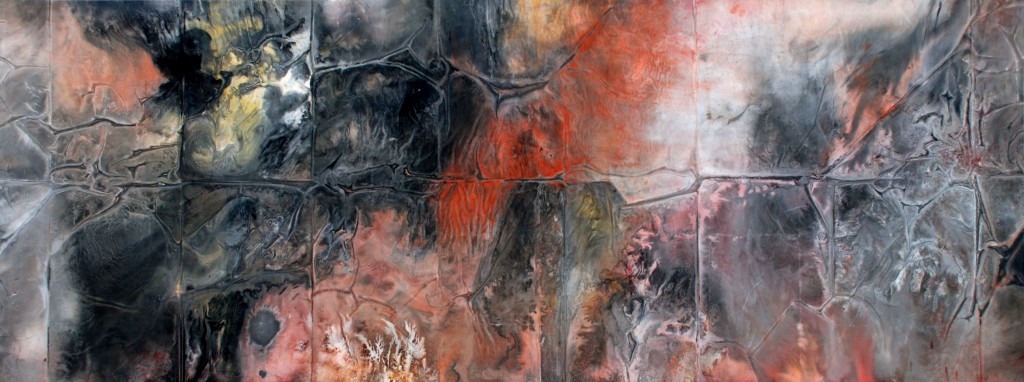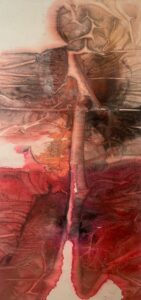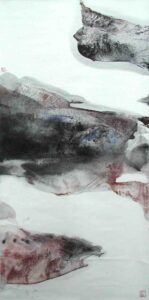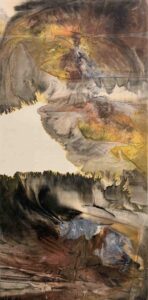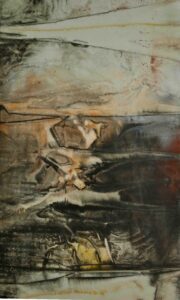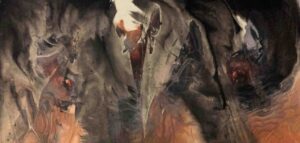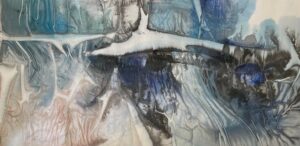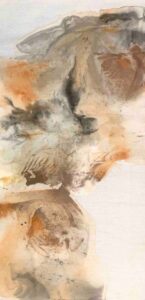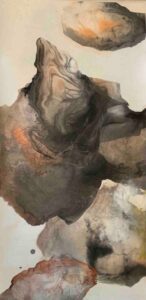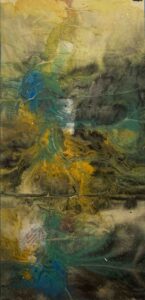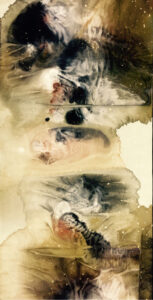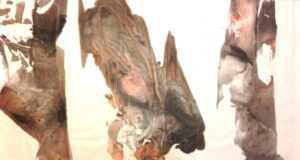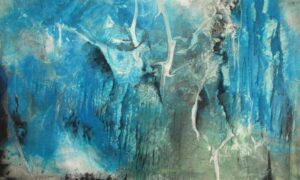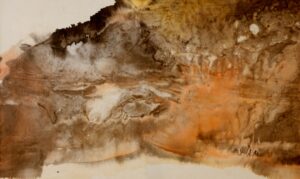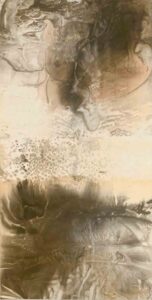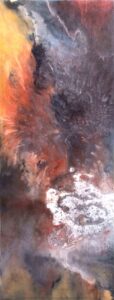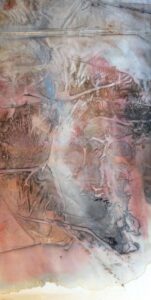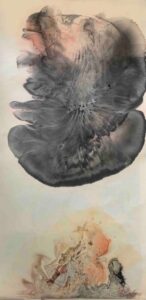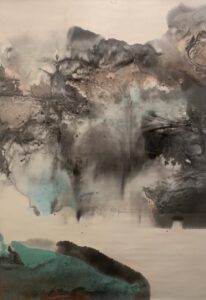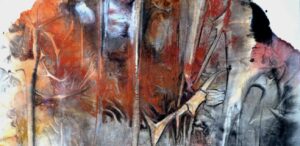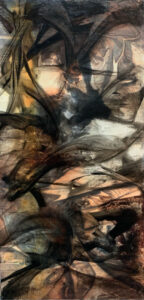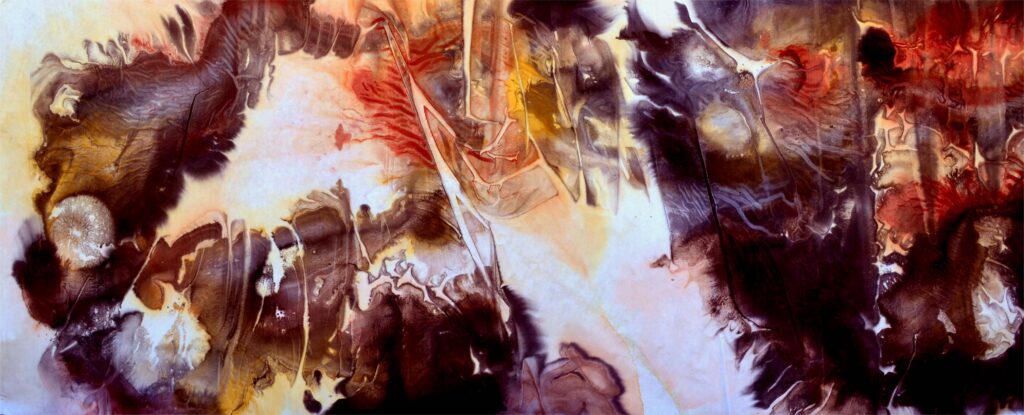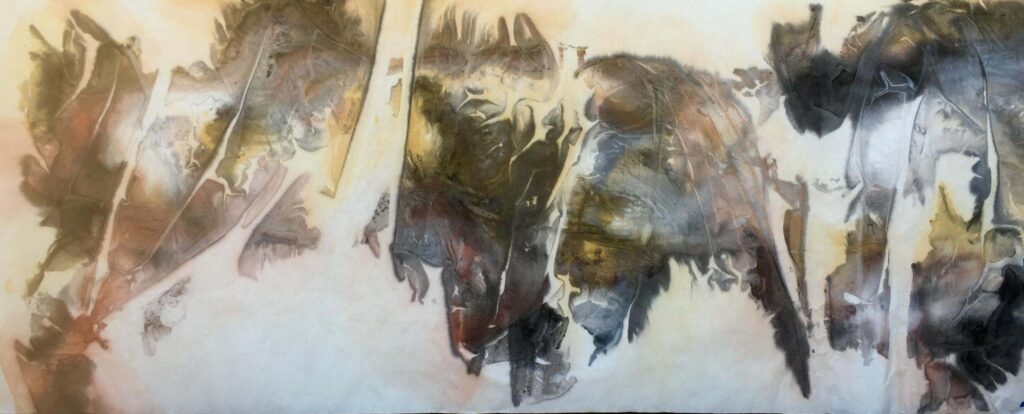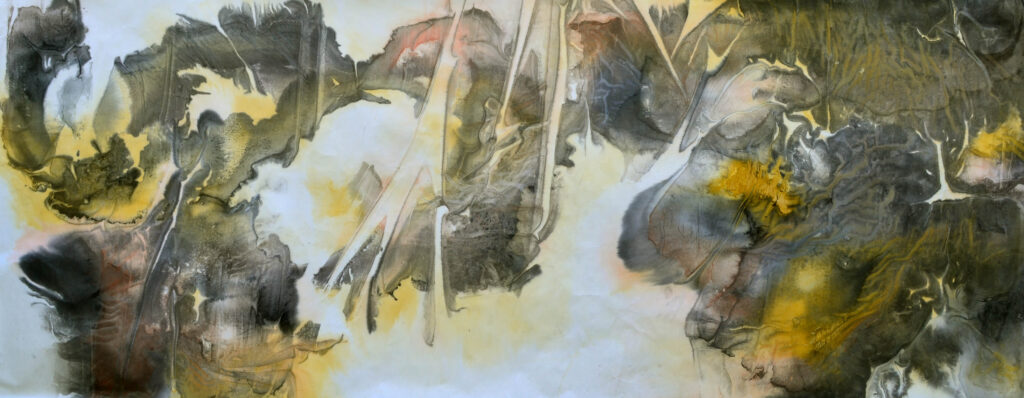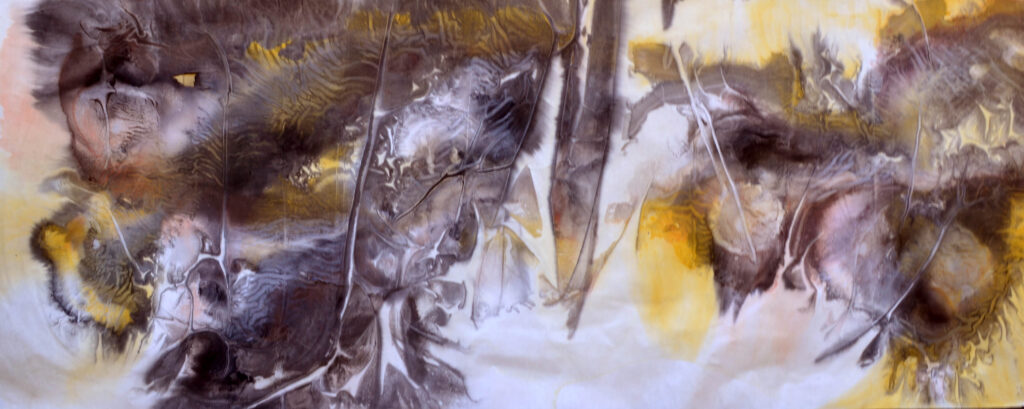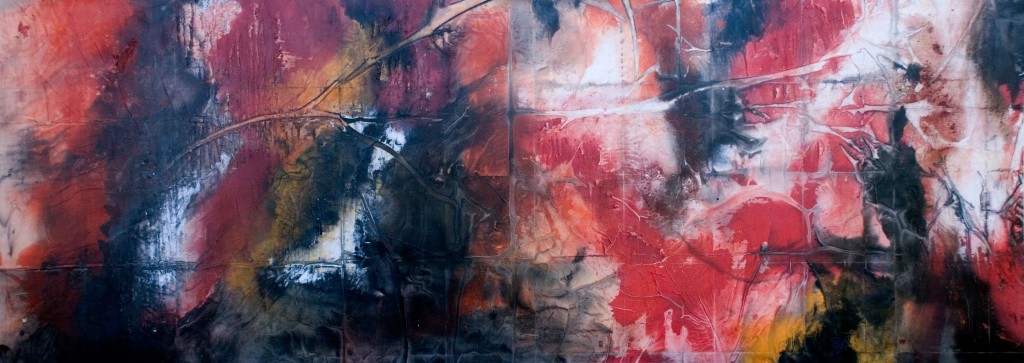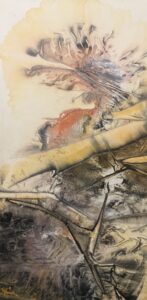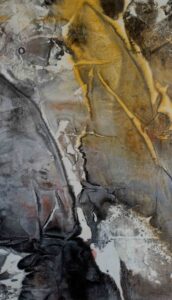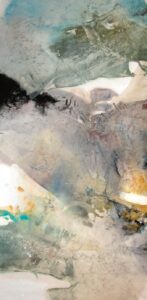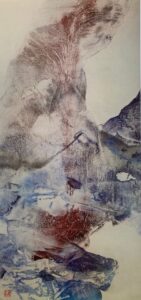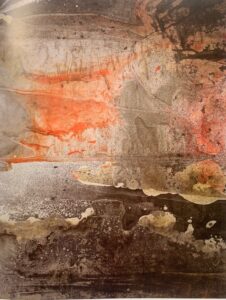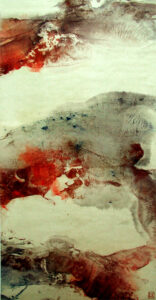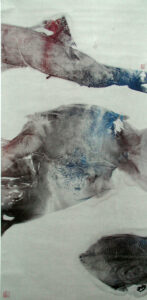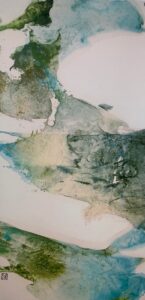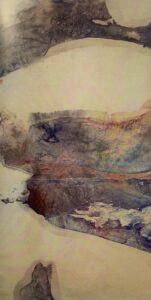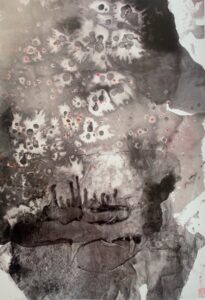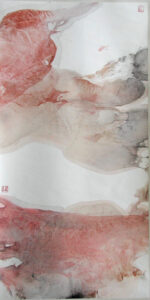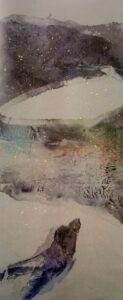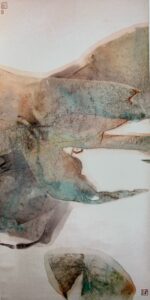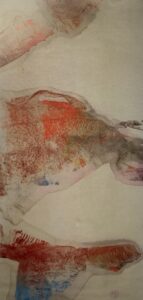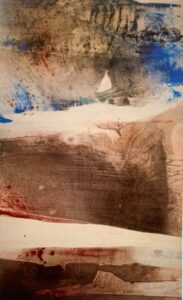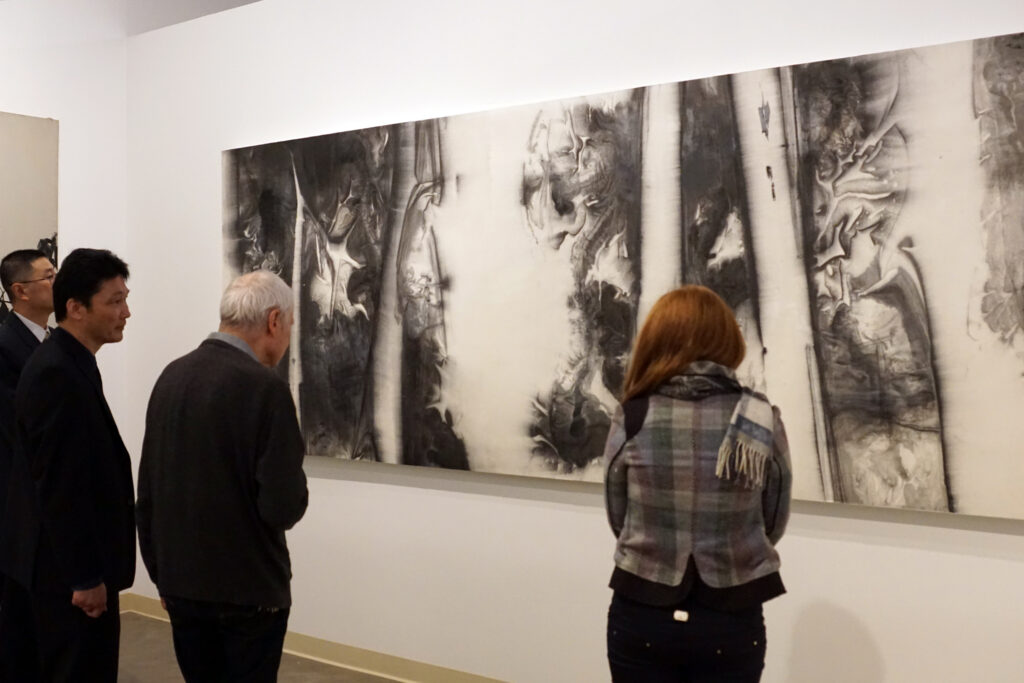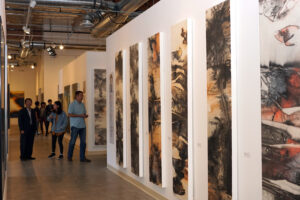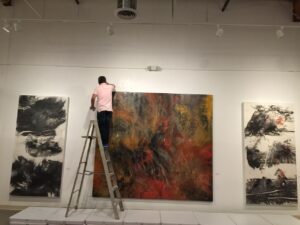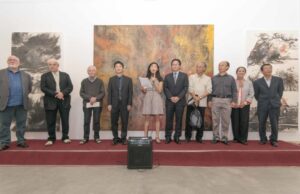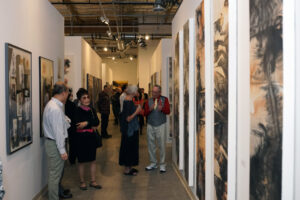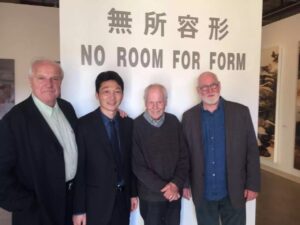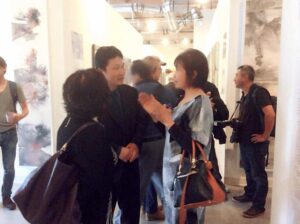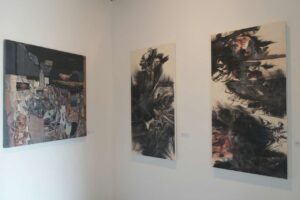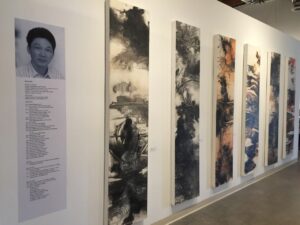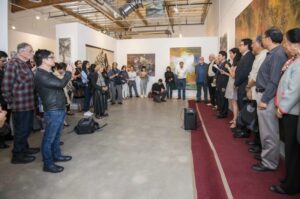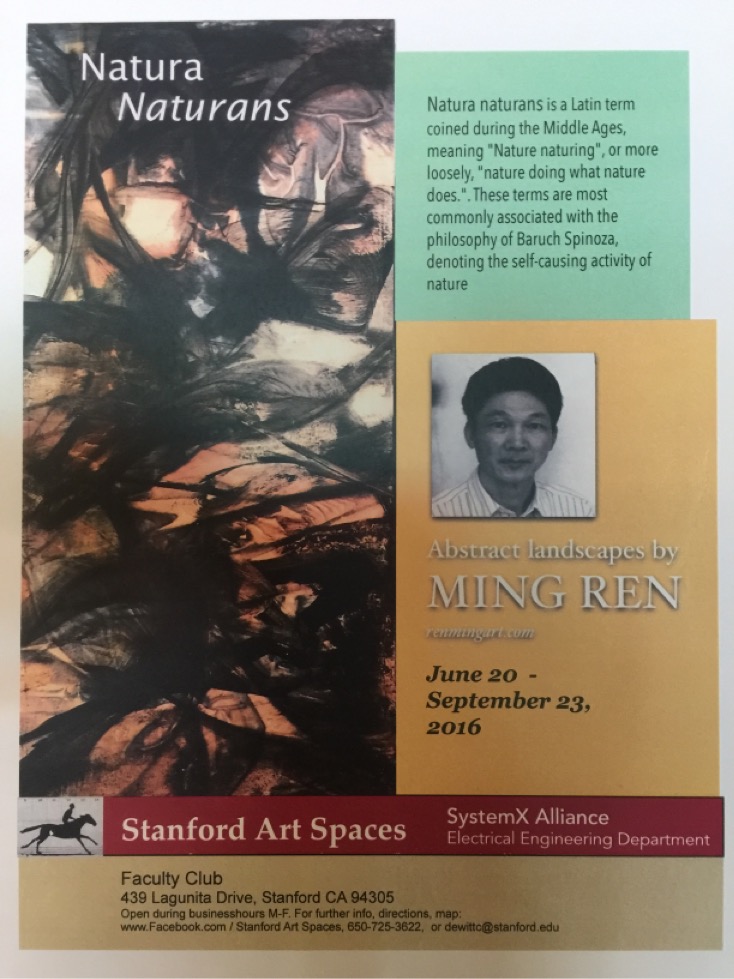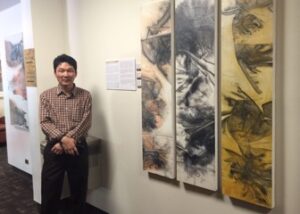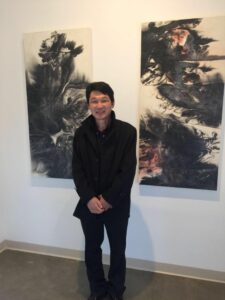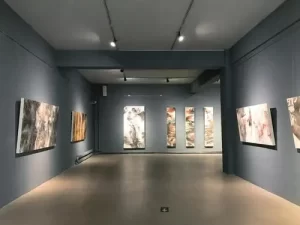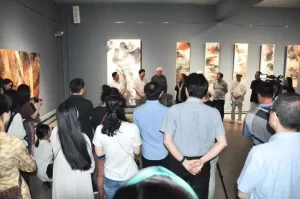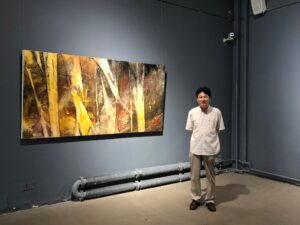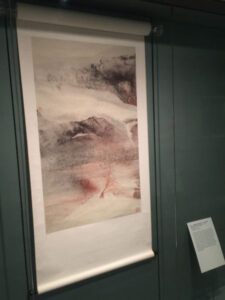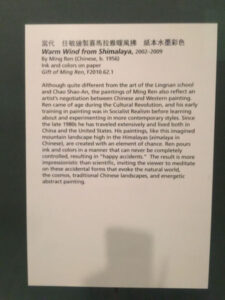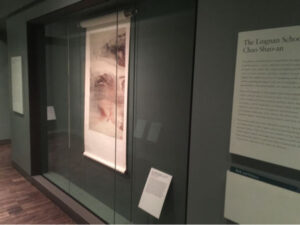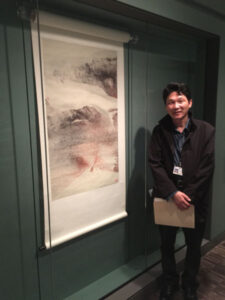Solo Show [Mysterious Ink World], Curator: Dr. Ellen Huang
Coos Art Museum
Group Show [Expressions West] at Coos Art Museum, Oregon, USA 2014
Ink Work
Color Ink
Artwork in Selected Private Collection
No Room for Form: Abstract Painting by Four Contemporary American Artists
No Room for Form displays work by four artists who have made outstanding contributions to contemporary American abstract painting. All four artists have deep and sustained connections with China. The most senior, Fred Martin, who led the San Francisco Art Institute for many decades, became infatuated with Confucian philosophy and Chinese poetry, as well as with Song dynasty landscape painting, during his undergraduate years. Beginning in the 1980s he repeatedly took his students on exchange programs to the Zhejiang Academy of Fine Arts (now China Academy of Art). Over the course of his seventy-year artistic career, all his work, regardless of whether it is his early cubist painting or the abstract expressionist work he has created since middle age, has traces of eastern philosophy. David Frazer, who served for many years as the painting department chair at Rhode Island School of Design, also took his students to the Zhejiang Academy of Fine Arts in the 1980s, and in subsequent years visited both the Central Academy of Fine Arts and the Lu Xun Academy of Arts many times. Jeremy Morgan, who is currently a professor at San Francisco Art Institute, attended the Ruskin School of Drawing and Fine Arts at Oxford University in the 1970s where he was strongly influenced by Chinese landscape painting of the Song dynasty. Inspired by American abstract expressionist ideas, he merged the concepts of Chinese shanshui with Euro-American landscape painting. The key figure in bringing the four artists together is the youngest of the group, Ming Ren. Ren graduated from the Zhejiang Academy of Fine Arts Oil Painting Department and moved to the U.S. in the 1980s. Since earning his MFA at the San Francisco Art Institute in 1992, he has taught at the Rhode Island School of Design, and his alma mater, SFAI. Beginning in the 1990s, he and Jeremy Morgan together visited China many times to lecture about Western oil painting and to teach techniques of acrylic and oil painting. He is currently an adjunct professor at several art schools in China.
Ming Ren’s skilled mastery of the techniques of many different painting mediums enables him to fluently and seemingly effortlessly unlock their potential in his abstract expressionist painting. Although his work is created using a variety of different materials, one can still sense the underlying influence of traditional Chinese ink painting. The collision of color and ink produce a powerful visual shock, but at the same time the painting surface brings forth the profound stillness of the vast cosmos. In this universal calm Ren reveals his understanding of the relationships between humankind and nature found in ancient Chinese philosophy and aesthetics. The works in the present exhibition display his experiments in abstract ink painting of recent years. The most striking of them is a huge work, twelve meters in length, entitled Interactive Ink. This is his collaborative development with Silicon Valley software engineer Dr. Zhang Hansong of an interactive virtual painting. This innovative expressive form combines painting and newly developed motion sensitive software to let the audience directly participate in the re-creation of the work. When the audience passes the long handscroll projected on the screen, the flow and expansion of ink will respond to the speed, quantity, and direction of the viewers’ movements. This experiment opens new potential for the development of Chinese ink art.
The nonagenarian Fred Martin studied with key figures in the American abstract expressionist movement, Mark Rothko, Clyfford Still, and David Park as a young man. In the current exhibition we are fortunate to be able to see his early work of the 1950s and 1960s along with representative examples from the 1970s to the present, and thus trace the artistic development of this American abstract expressionist. In the 50s and 60s, collage, drawing, and etching were the vocabulary with which he often expressed his visual experience of the external world in abstract terms. His subsequent painting expanded further in format, composition, and color. Whether harmonious or discordant, the lines, colors and forms are insistently nonobjective. A series of watercolors from the 1990s returned to the use of collage, but with lush abstract backgrounds creating strong contrasts with the texts applied to the surface. In the new millennium, his works in acrylic have more strongly integrated an Asian flavor, with strong black washes. Whether in composition or brushwork they reveal the influence of Chinese painting and calligraphy, while simultaneously returning to his roots in abstract expressionism. Devoted to art education for decades, Martin also has great accomplishments in the fields of art history and criticism, where his writing and teaching conveys his understanding of the relationships between art and humankind, life, and society.
Jeremy Morgan is a master of color, especially in his magical control of the application of acrylic to canvas. In his abstract painting, the treatment of color is infinitely varied, the compositions are dramatic, sometimes wide open, sometimes tightly compressed, creating surprisingly beautiful visual effects. Already as a student at the Ruskin Art Academy he was fascinated by Chinese and Japanese art. The special treatment of composition and space in Chinese landscape painting and Chan Buddhist art, and especially the Daoist ideas behind them, inspired him greatly and led him to find connections between Asian philosophy and the paintings of nineteenth century British artists Turner and Constable and the French impressionist Monet. Later, under the influence of American abstract expressionism, he began to combine the concepts of Chinese shanshui painting with the representation of space in seventeenth to nineteenth century Euro-American landscape painting, exploring in his canvases the contemplative sublime. In the past few decades, he has continuously experimented in this direction. At the same time, he has made unique technical innovations in the application of acrylic pigment. His painting is very emotional and full of poetic and musical feeling. This latter quality may also be related to his love of Song dynasty landscape painting. His work in this exhibition represents the remarkable achievements of his experiments in recent years.
David Frazer’s painting seems slightly different from that of the three others in this exhibition, but shares with them a subtle aesthetic. A long career teaching at one of the most famous American schools of design has left clear marks in his work. Most of his paintings are composed of abstract lines, grids, nets, and three-dimensional structures, like the virtual constructions one can often see in a computer design lab. These things float in space, surrealistically above the canvas, like fragments of a deconstructed world, but at the same time there are always concrete images, such as birds, eggs, squirrels, rosebuds, to symbolize life and nature in the human world. These organic forms and mechanical constructs are interlaced irrationally. The paintings are divided into many different segments, seeming to emphasizing the chaos of time and space. The viewer’s line of sight is constantly attracted and interrupted by these disjunctive signs. As they may suggest the disorder of the world, they constantly remind us of the relationship between the past and changes in the present. Here he uses the symbols of nature in a labyrinthine montage, puzzling the viewer with a chaotic order in which mutually contradictory elements are forcibly assembled in a single picture plane. In a demonstration of the artist’s powerful control of the painting’s surface, however, these seemingly random segments harmoniously coexist by virtue of their subtle application of color and sophisticated rendering.
Although the development of abstract painting in the West has had decades of history, we can still feel its strong attraction in these artists’ work. Every artist here has his own distinctive personal style, even different preferred mediums, but they share a common faith in the potential of continuous exploration of the abstract language in painting. It is just this belief that brought them together and has sustained them for so many years. Such constancy is particularly precious, especially as painting itself faces the challenges of numerous new art mediums and forms. The artworks of these four distinguished abstract painters in this exhibition provide a great opportunity for us to understand contemporary American abstract painting.
Kuiyi Shen
Professor, Visual Art Department of California University, San Diego
January, 2017
International Art Center, Fremont, California, USA. 2015
Stanford Art Spaces
Solo Show [The East Wind From The West] at Fangyuan Art Gallery, Beijing, China, 2019
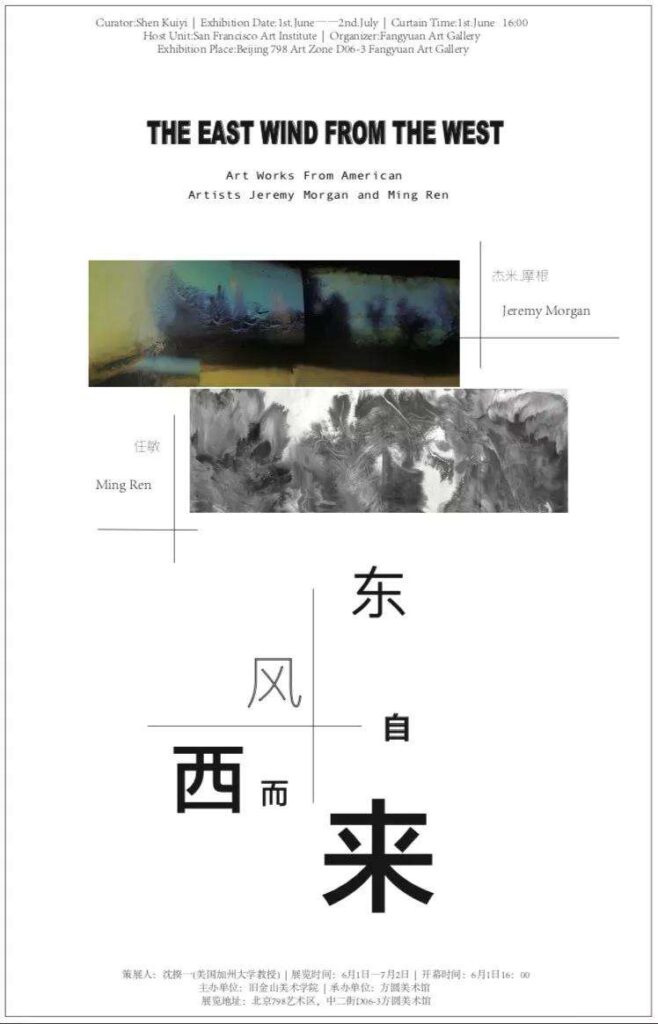
Ming Ren’s works, along to an Abstract Expressionist style of Chinese brush painting with acrylic receiving a Gold Medal from the Florence International Biennial of Contemporary Art, to now on very large scale at least one enormous work like a Chinese scroll painting in black ink but on canvas transferred by AI into a perpetually changing vision as the viewer walks beside. And so Ming Ren, a West Wind already an ever-growing Destiny of synthesis of East and West and an ever evolving future…
Prof. Fred Martin,Vice President Emeritus of San Francisco Art Institute, May 2019
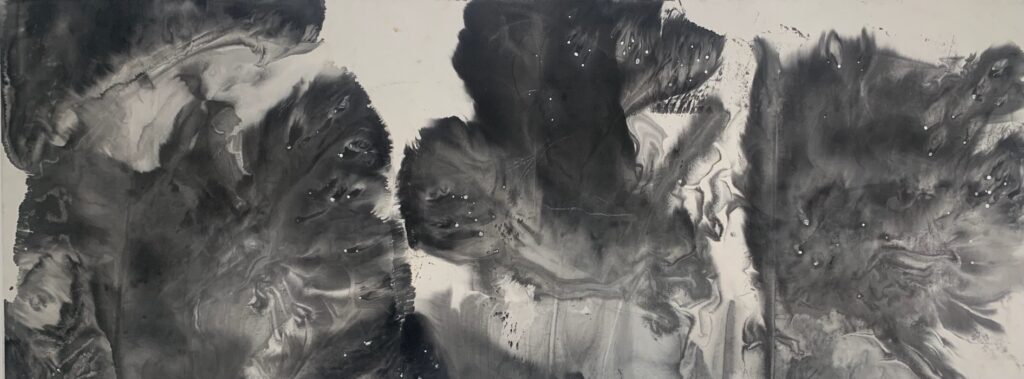
San Francisco Asian Art Museum 2016
Museum Collection Show
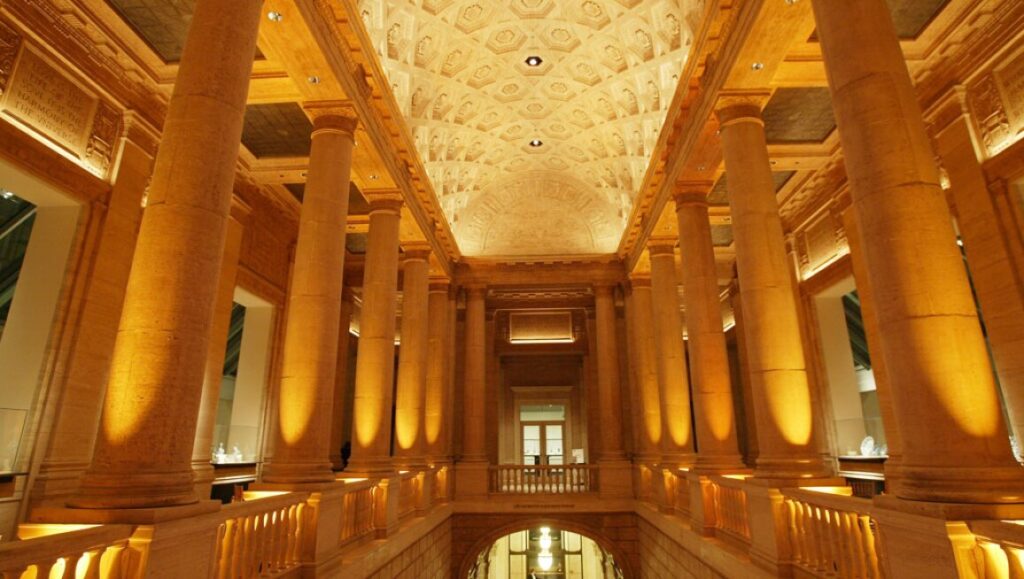
Warm Wind From Shimalaya
Although quite different from the art of Lingnan school and Chao Shao-An, the painting of Ming Ren also reflect an artist’s negotiation between Chinese and Western painting. Ren came of age during the Culture Revolution, and his early training in painting was in Socialist Realism before learning about and experimenting in more contemporary styles. Since the late 1980s he has traveled extensively and lived both in China and the United States. His paintings, like this imagined mountain landscape high in the Himalayas (ximalaya in Chinese), are created with an element of chance. Ren pours ink and colors in a manner that never be completely controlled, resulting in “happy accidents.” The result is more impressionistic than scientific, inviting the viewer to meditate on these accidental forms that evoke the natural world, the cosmos, traditional Chinese landscapes, and energetic abstract painting.
Curator: Li He
